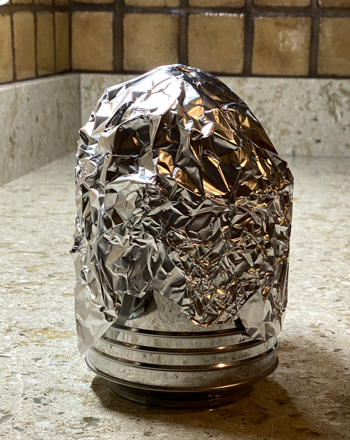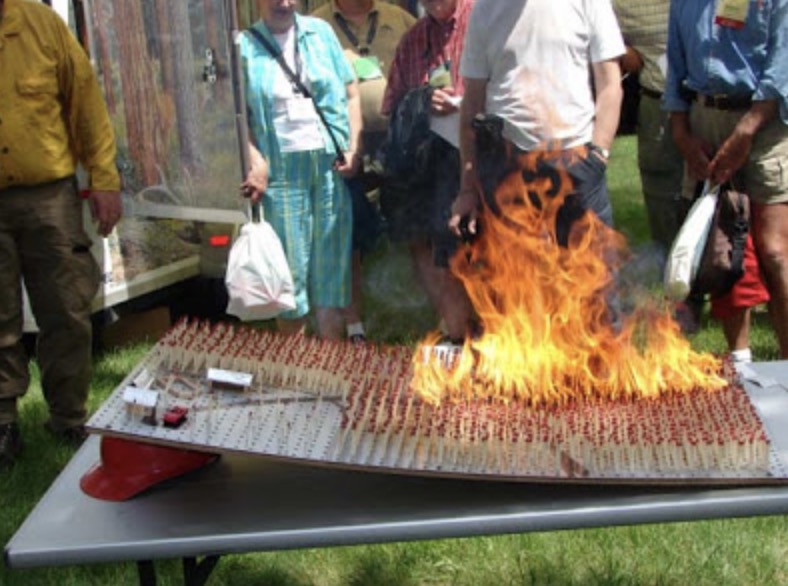
Today I received a message from a mom who needs our help:
Hi-
My son chose the topic of wildfires for his project on natural disasters. We’re having a hard time thinking of a demonstration that’s safe for his classroom. Do you have any suggestions?
Thank you.
So, I’ll put this out there for our readers. Can you help out this fourth grader that has an interest in wildfires? The young man needs to choose a demonstration this week. Leave a comment with your ideas.
The tricky part is coming up with something that will be safe to do in a classroom full of 10-year olds.
The first thing that came into my mind was a demonstration of pyrolysis, the process of combustion of vegetation. Before canned training was developed for entry level wildland firefighters, we wrote lesson plans and stood before the new hires and taught them about fire behavior, line construction, weather, and fire science. At least that’s the way we did it on the El Cariso Hotshots.
One demonstration I used that would not be safe for a fourth grader without adult supervison, was pyrolysis; showing them that when wood or vegetation is consumed in a fire, it’s actually a gas that is burning. It would be best to do this outside in an area cleared of flammable material. Stuff a coffee can with some sawdust or dried vegetation (grass or brush). Take aluminum foil and form it into an upside down funnel and place it around the top of the can, making it as air-tight as possible (similar to the photo above). Then make a hole a little smaller in diameter than a pencil at the top of the foil. Place the can on a heat source, such as a stove, and wait until a steady stream of smoke comes out of the hole at the top. Then hold a long butane lighter used for igniting a BBQ grill adjacent to the smoke and watch the gas burn. A version of this is described on YouTube.
Another demonstration that absolutely would not be suitable for a fourth grader is something we wrote about in 2008:
Everybody at some point has played with matches. Mike Dannenberg of the Bureau of Land Management, a fire suppression supervisor in Montana and the Dakotas, puts on a presentation about residential fire preparedness that involves hundreds of matches. The article at wvmetronews.com has more details as well as a series of photos. Here is an excerpt.
“I liken it to building in a flood plain,” said Dannenberg. “If you thin around your house, if you reduce the fuel load, if you build out of materials that are not combustible a lot of times it will protect your home.”

Dannenberg has created a demonstration model to show the intensity of a canopy fire. He loads a pegboard with hundreds of match sticks. Each match represents a highly combustible evergreen tree. A road snakes through the middle of the model forest. The upper corner of the board features a homestead with a house, garage, and various outbuildings. The scene is created to the specs recommended by the BLM. Each building is covered with a metal roof and the yard space has only sparse and wide spaced trees.
Dannenberg tilts the board to replicate the speed of a fire moving up the slope of a hill or mountain. He lights a single match at the far end of the pegboard and at the foot of the simulated hill. The fire spreads rapidly, but stops short of the home–leaving it untouched. It’s an effective demonstration that Dannenberg says plays itself out every summer in the western United States.
UPDATE, February 24, 2020:
There are some good ideas in the comments. Keep them coming. Like the one above (the matches on the peg board) some of them are not appropriate for fourth-graders, but somebody somewhere might find them useful at another venue. So think about gatherings of adults as well.


